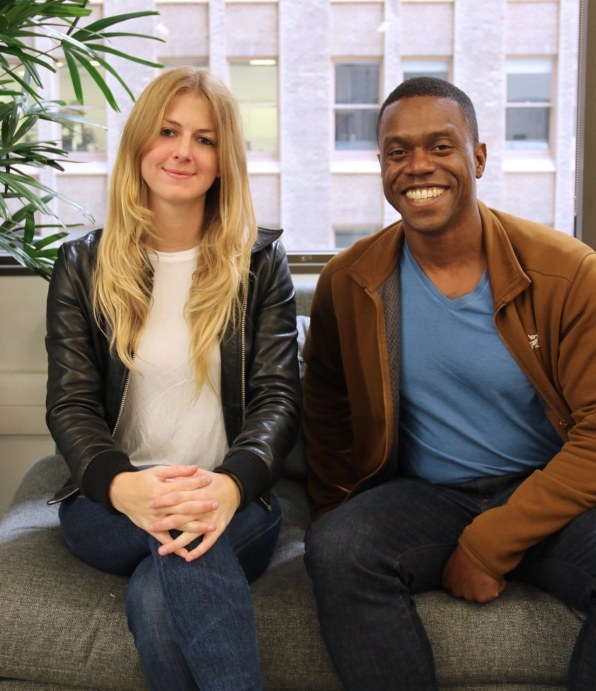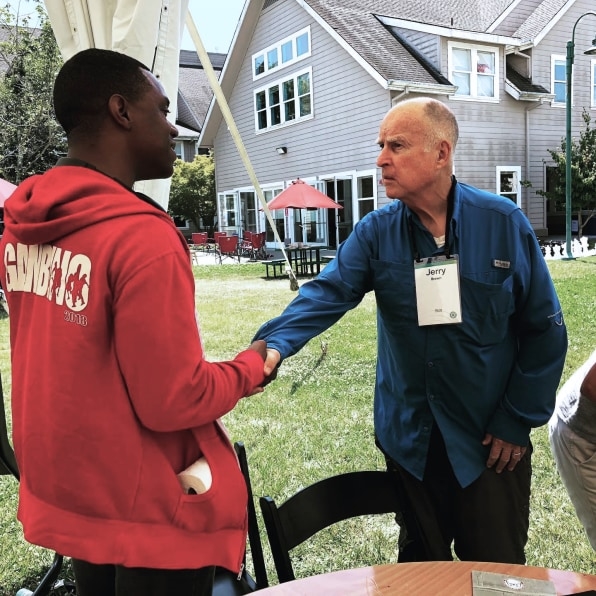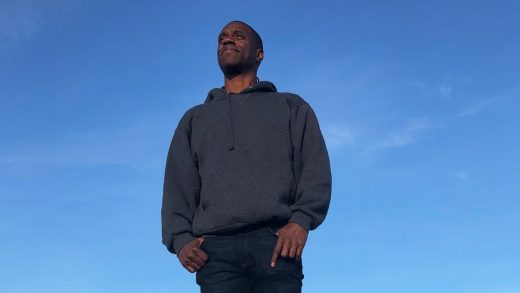This tech worker’s transition from a life sentence to a career is a lesson for the whole industry
At the end of 2017, Emile DeWeaver was 20 years into a life sentence in San Quentin for murdering a man when he was 19. Right now, he’s sitting at a desk in San Francisco in the offices of Pilot, a startup that manages bookkeeping for businesses, working as a product specialist and communicating with clients.
How DeWeaver moved from San Quentin to the midst of the Bay Area tech scene is, almost needless to say, quite the story. But it’s one that, as both the criminal justice system in the U.S. and the tech industry continue to evolve, could become much more common.
When DeWeaver entered San Quentin in 1998, he started to work on himself. Through conversations with older men incarcerated at the facility, he began to consider how growing up amid violence and poverty in Oakland set him on the path to incarceration himself. “I was thinking about this not to make excuses, but because in understanding the process, you get to understand solutions,” DeWeaver says. For him, the path to crime “came down to a deep sense of isolation and alienation from society.”
So while in prison—which is a system, he says, designed to perpetuate that same isolation and alienation he experienced as a young person—he began to figure out how to transcend it using a talent he knew he possessed: writing. With two other incarcerated men at San Quentin, DeWeaver founded Prison Renaissance, a nonprofit that highlights works of art and writing made by people inside prisons. “Trying to start a nonprofit from prison is difficult,” DeWeaver says. Incarcerated people don’t have any direct internet access, so DeWeaver and his cofounders “basically ended up patching it together through a lot of social hacks, or analog hacks,” he says. San Quentin hosts a number of programs that bring in outside volunteers to work with inmates, and DeWeaver and his cofounders made connections with people in the arts, and with other artists in the prison, to spread the word about their initiative. Prison Renaissance is now forging partnerships with universities in California—currently UCLA and Stanford—to bring students into artistic collaboration with incarcerated writers and artists.

[Photo: courtesy of Pilot]
At the same time, DeWeaver was working on launching the first in-prison chapter of the Society for Professional Journalists to bring more voices of incarcerated people into the public discourse (DeWeaver himself has contributed op-eds to a number of different publications). Through that work, he met Pilot founder and CTO Jessica McKellar, who was there through her work with Life of the Law, a podcast about the legal system. (McKellar serves as member of the advisory board for Life of the Law, which she got involved with through her interest in expanding justice and diversity through tech.)
In collaborating on a storytelling project about life inside San Quentin, “she got a chance to see my workset, which is one that I’ve transferred from career to career—from starting a nonprofit to doing social justice advocacy work,” DeWeaver says. “A lot of the creative and outside-the-box thinking is transferrable to management and product and learning things quickly,” DeWeaver says. McKellar saw almost immediately that DeWeaver could bring some valuable skills to Pilot. “He’s a very incisive mind on various social issues, he’s an incredible writer, and has leadership experience organizing people around causes,” McKellar says.
At the time they met in 2017, DeWeaver was incarcerated. When then Governor Jerry Brown commuted his sentence for his progress and leadership within the prison at the end of that year and he became eligible for parole, McKellar told DeWeaver that she wanted to offer him the opportunity to interview for a role at Pilot. “We were hiring for people who were smart and great problem solvers and communicators,” she says. “I had someone right in front of me with those skills, so why not create an opportunity to hire him for the team?” Because DeWeaver was still at San Quentin during the interview process as he awaited a parole hearing, the Pilot team had to be creative. “There was quite a rigmarole getting a whole interview panel gate-cleared to get into the prison,” McKellar says, and to circumvent the lack of internet, they conducted certain portions of the process that would’ve been done on the computer on paper instead. And because he’d never interviewed for a job before, McKellar walked him through the basic format ahead of time.

As the head of a tech company, hiring DeWeaver was first and foremost a matter of what he brought to the team—as he approaches the end of his first year at Pilot, McKellar says that he’s been instrumental in assisting with product development and client communications.
But it also illustrates the potential for the technology industry to create opportunities for people leaving prison. Many tech companies are beginning to make efforts to hire people with criminal records, but that work to diversify hiring, McKellar says, can begin while people are still inside. Having employment lined up, McKellar says, is highly advantageous as people reintegrate into society. But too often, DeWeaver adds, the idea that reentry begins the moment people leave prison holds sway. “Reentry should begin the moment a person walks into prison,” he says. His connections with McKellar and other advocates from outside the prison arose through his dedication to forging opportunities for himself. But in-prison programming that connects more people who could soon be leaving incarceration to resources and opportunities while they’re still inside could ease the transition for many more.
And tech companies, McKellar adds, could play an instrumental role. “Our industry has so many resources, and there are so many talented people in prison and coming out of prison,” she says. Pilot has now hired several people, including DeWeaver, who were formerly incarcerated, and ensures that they receive enough training to feel comfortable on the job as they begin. DeWeaver quickly ramped up to working full-time. It’s been important, McKellar says, for the Pilot team to learn about what it means for him to be on parole and grant him the time needed to attend classes and meet with his parole officer as needed. DeWeaver also says that the culture at Pilot has encouraged him to continue his work with Prison Renaissance now that he’s on the outside.
As DeWeaver continues to pursue justice advocacy alongside his career in tech, he’s noticed that “one of the biggest misconceptions I run into in social justice work is this idea that there’s nothing you can do,” he says.
For tech companies like Pilot, “hiring formerly incarcerated people is one thing you can do,” he says. And making that decision involves a broadening of the definition of diversity in a way that both DeWeaver and McKellar feel can benefit tech and other industries.
“I feel like there’s two kinds of diversity,” DeWeaver says. “There’s inclusion, which says you can be included if you act and look like me. And maybe you don’t look like me, but if you act enough like me, we’ll pretend that you look like me. But that’s not really diversity.”
At Pilot, he says, “the diversity I enjoy is this idea of inclusion and you get to be who you are. I’m formerly incarcerated and I’ve come in and my strengths have been brought to bear on product development and building a stronger company. When people see that an office environment can hold even a person in my position, they know that it can hold them. They know they’re working in a place that has their back.”
(20)



